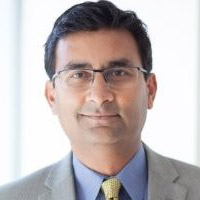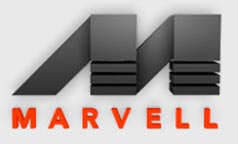PRESS AND NEWS CENTER
Widespread Collaboration Across the Ecosystem is Critical to Ensure Interoperability and Avoid Consumer Confusion around HDR

 Gaurav Shah, Vice President Marketing and Strategy, Multimedia Business Unit, MARVELL Technology Group
Gaurav Shah, Vice President Marketing and Strategy, Multimedia Business Unit, MARVELL Technology Group- HDR video will be well received by consumers because it advances progress towards greater realism in video presentations.
- Industry collaboration on HDR will be essential to maximize interoperability between HDR variants and other technologies in the video ecosystem.
- The industry must also collaborate on positioning and messaging around HDR to avoid consumer confusion that can result in HDR failing to gain traction in the market, as has happened with other technologies.
High dynamic range (HDR) video continues to generate industry attention and interest that is being echoed by consumers. Broad collaboration – across all aspects of the value chain -- on both HDR technology and consumer messaging will be essential to ensuring that this exciting technology gains wide acceptance.
 To get a semiconductor industry perspective on the opportunities – and challenges – posed by HDR, we caught up with Gaurav Shah, Vice President Marketing and Strategy for the Multimedia Business Unit at MARVELL Technology Group. Technicolor and MARVELL are working jointly on a range of HDR projects.
To get a semiconductor industry perspective on the opportunities – and challenges – posed by HDR, we caught up with Gaurav Shah, Vice President Marketing and Strategy for the Multimedia Business Unit at MARVELL Technology Group. Technicolor and MARVELL are working jointly on a range of HDR projects.
Q: Gaurav, there have been a lot of developments and news around high dynamic range (HDR). What do you think is behind all the conversation around this technology?
Shah: High dynamic range is something that is very near and dear to everything the Multimedia Business Unit at MARVELL has been doing. One of the key things we’ve been seeing, especially over the last few years, is that video consumption is becoming much more important for consumers, in every shape and form.
What we are also seeing is that, typically, consumers gravitate toward things they can understand, things that are tangible and clear. This is why big screens and high resolutions have been so well received by consumers. That is why you are seeing the proliferation of 4K, ultra high definition TVs. It is also why we are seeing platforms like virtual reality and augmented reality begin to get traction with consumers.
All this ties into consumers wanting a certain level of realism, a certain level of immersive experience. And high dynamic range is an important element, an important piece of technology that brings a higher level of realism that consumers are now expecting.
Q: What kind of opportunities does that create for a company like MARVELL, especially for the Multimedia Group that you lead?
Shah: It creates a lot of opportunities for MARVELL as a semiconductor company and for the Multimedia Business Unit within it.
When we started the Multimedia Business Unit eight or nine years ago, our mission was all about enabling immersive video experiences. We created our own set of post-processing technologies. We created a brand, Qdeo – which stands for quick video – that was very well received in the marketplace.
HDR is a continuation of this trend, and offers MARVELL an opportunity to bring an even higher level of immersive experiences to the consumer. It ties in very well with what we do and with the kind of platforms the Multimedia Business Unit enables: including our set-top boxes for service providers, over-the-top platforms like those you see from Google Chromecast and Roku, for example, and some of the virtual reality and augmented reality solutions that you see coming out.
It allows us to continue promoting and developing the frontiers of the entire visual experience, which has been one of our fortes. And, in this context, it is good to be working in an open industry, in a collaborative manner with companies like Technicolor, which is at the forefront of HDR.
Q: You mentioned the collaboration with Technicolor and with others. Tell us how important that is. It suggests the necessity for interoperability and perhaps backward compatibility. What are some of the issues you are working on with your partners that makes it better when we work together?
Shah: Interoperability is a really important element. One thing we definitely want to avoid is what took place when 3D was starting to become popular, and also what happened to other nascent technologies that eventually fell by the wayside. There was consumer confusion because those technologies were not positioned and marketed properly.
In the case of HDR, what is important for MARVELL, for Technicolor -- and for others that are promoting and evangelizing HDR technologies -- is to ensure that there is cross-collaboration and interoperability across different formats.
The last thing you want is a consumer taking a TV home that has a certain format implemented but not another one. We do not want situations in which the consumer may be watching some content from Netflix that is encoded in a certain format…but there is an issue with how that content plays on their particular TV. Or you may have different content in different formats and consumers want to switch from one to the other, but they can’t. We need to avoid scenarios in which interoperability problems cause screen flicker or black screens -- or at the very worst, a situation where the video can’t play at all.
So it think it’s very important that MARVELL, Technicolor and others continue working in a collaborative fashion and working with industry bodies like the UHD Alliance and the UHD Forum to ensure there is a common base that prevents, or at least alleviates, a lot of the consumer confusion.
Q: What specifically are some of the initiatives that you are working on with Technicolor?
Shah: With Technicolor, we have been evangelizing and co-marketing HDR now for some time now. Most importantly, we’ve been making sure that, as we promote HDR to content creators, pay-TV service providers, and OEMs — the ones who are manufacturing these boxes — that they understand what the technology is about.
They need to understand how it interoperates with other technologies, and how, in a particular implementation, you can prevent a situation like the one we just talked about: a consumer not being able to play content appropriately.
That is something MARVELL and Technicolor have been working on together effectively for some time.
Q: Where do we go from here? What are the next steps we can take to ensure that HDR is adopted as rapidly and as rationally as possible?
Shah: HDR creates a lot of monetization opportunities for a lot of different companies. But notwithstanding the issues weve just talked about, which need to be resolved, the key question remains: how do you make HDR mass market?
To do that you need to ensure, from a technology perspective, that you have the right implementation; one that does not impose a significant burden on the infrastructure.
For example, when a consumer is watching live linear TV as opposed to video on demand, how that content is captured, how it is ingested, and how it is converted to the specific format that the infrastructure needs – it is important to ensure that the technology is not too expensive.
The implementation of the technology also needs to make sure you don’t have significant bandwidth constraints or limitations on the screen, because that ultimately translates to a higher cost for the consumer.
All these steps are being taken, but these developments need to happen in conjunction with evangelization and with education of the end customer with regards to what the technology is.
We need to avoid the consumer confusion that occurred when high definition came out. Was it 720p? Was it 1080p? We need to make sure that when people talk about HDR-enabled content they have a certain expectation and that their expectation is fulfilled irrespective of what technology is used.